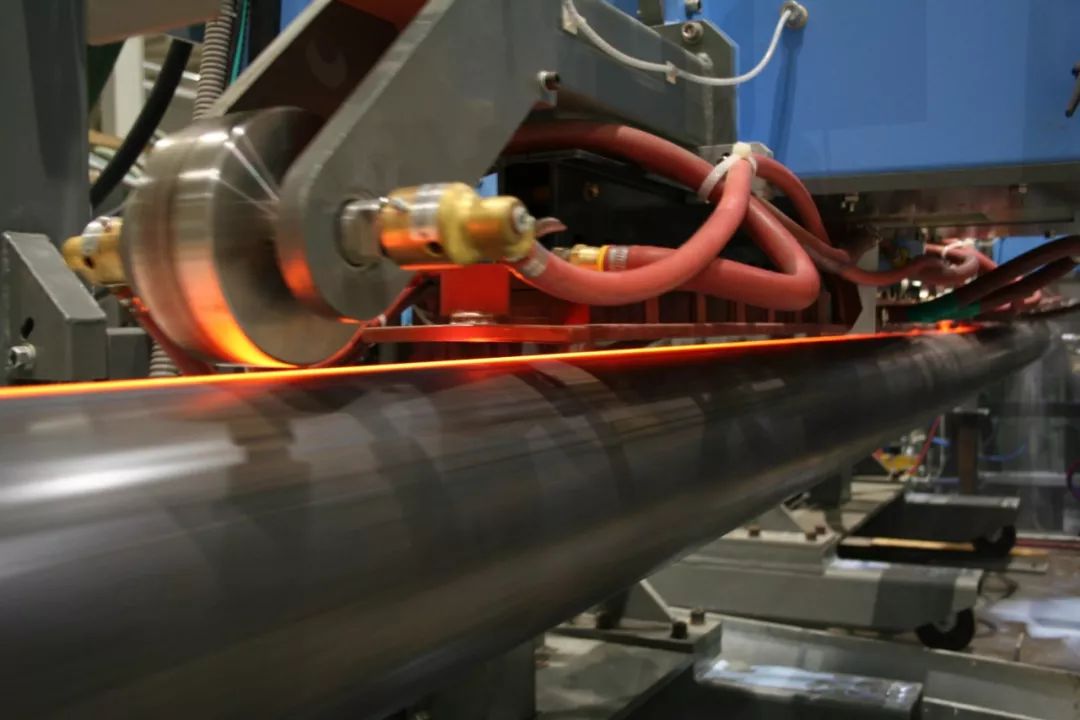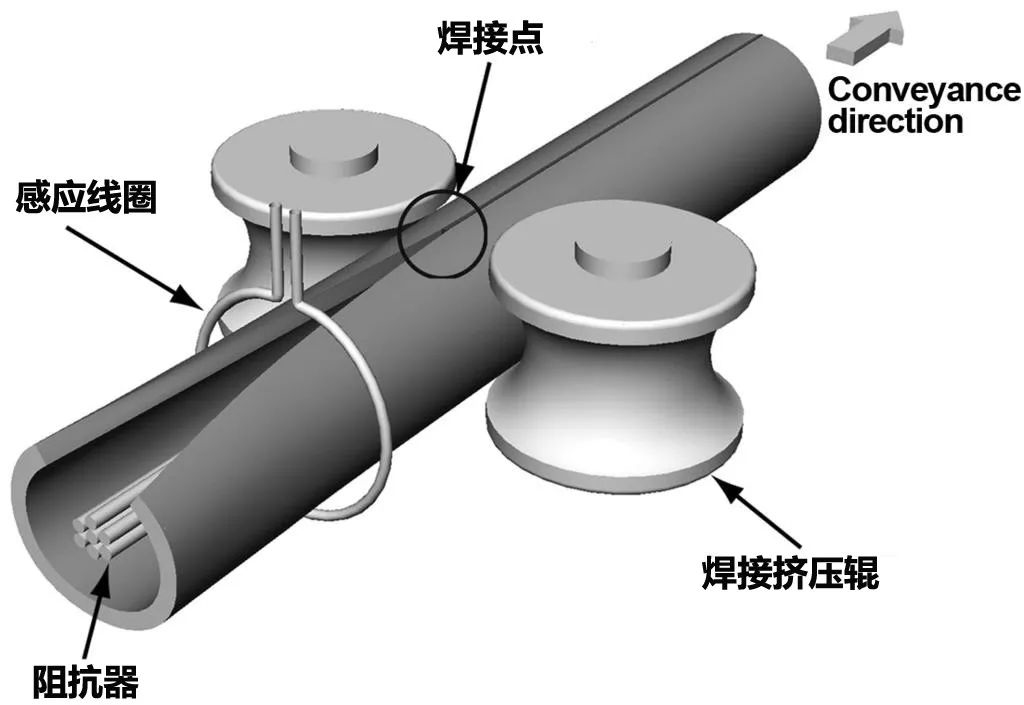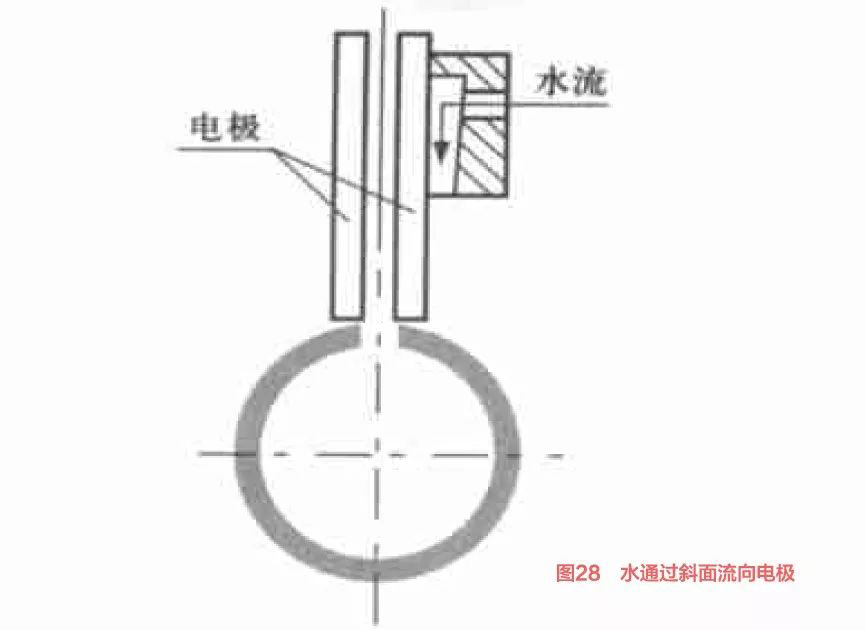Prevention of pipe making weld cracking of high frequency welded pipe equipment (2)
- Sort:Information
- Auth:
- Source:
- Release time:2022-11-19 11:30
- Pvs:
【概要描述】In the production of welded pipes with high frequency welded pipe equipment, the manifestations of cracks include long cracks, partial periodic cracks, and irregular intermittent cracks. Some steel pipes have no cracks on the surface after welding, but cracks appear after flattening, straightening or water pressure tests.
Prevention of pipe making weld cracking of high frequency welded pipe equipment (2)
【概要描述】In the production of welded pipes with high frequency welded pipe equipment, the manifestations of cracks include long cracks, partial periodic cracks, and irregular intermittent cracks. Some steel pipes have no cracks on the surface after welding, but cracks appear after flattening, straightening or water pressure tests.
- Sort:Information
- Auth:
- Source:
- Release time:2022-11-19 11:30
- Pvs:
In the production of welded pipes with high frequency welded pipe equipment, the manifestations of cracks include long cracks, partial periodic cracks, and irregular intermittent cracks. Some steel pipes have no cracks on the surface after welding, but cracks appear after flattening, straightening or water pressure tests.

There are three main reasons that affect the cracks in the production of high frequency welded pipe equipment: ①The quality of raw materials is poor. ②Edge joint state. ③The selection of process parameters is unreasonable. We explain and prevent the influencing factors of poor quality of raw materials and the state of edge joints.
③ Unreasonable selection of process parameters
The process parameters of high-frequency welded pipe production include welding speed (unit speed), welding temperature (high-frequency power), welding current (high-frequency frequency), extrusion force (grinding tool design and material), opening angle (grinding tool design and material) , Induction coil position), inductor (coil material, winding direction, position), and the size and placement of the resistor.

(1) High-frequency (steady and continuous) power, welding speed, welding extrusion force and opening angle are the most important process parameters, which must be matched reasonably, otherwise the quality of the weld will be affected.
① If the speed is too high or too low, it will cause low-temperature welding impermeability and high-temperature overburning, and the weld will crack after being flattened.
② When the squeezing force is insufficient, the edge metal to be welded cannot be fully pressed together, and the residual impurities in the weld are not easily discharged, and the strength of the weld is reduced;
When the squeezing force is too large, the metal flow angle increases, the residue is easily discharged, the heat-affected zone becomes narrower, and the welding quality is improved. However, if the pressure is too high, it will cause large sparks and splashes, causing the molten oxide and part of the plastic layer of metal to be squeezed out, and the weld will be thinned after being scratched, thereby reducing the strength of the weld and cracking.
Proper extrusion force is an important prerequisite for weld quality.
③ If the opening angle is too large, the high-frequency proximity effect is reduced, the eddy current loss is increased, and the welding temperature is reduced. If welding at the original speed, cracks will occur;
If the opening angle is too small, the welding current will be unstable, and a small blast (intuitively a discharge phenomenon) will occur at the squeezing point and cracks will be formed.

(2) The inductor (coil) is the main part of the welding part of the high-frequency welded pipe. The gap between it and the pipe blank and the width of the opening have a great influence on the quality of the weld.
① The gap between the inductor and the tube blank is too large, causing the efficiency of the inductor to drop sharply;
If the gap between the inductor and the tube blank is too small, it is easy to cause electric discharge between the inductor and the tube blank, causing weld cracks, and it is also easy to be damaged by the tube blank.
② The opening width of the sensor is too large, which reduces the welding temperature of the butt edge of the tube blank. In the case of a faster welding speed, it is easy to produce false welding, which will crack after straightening.
In the production of longitudinal welded pipes with high frequency welded pipe equipment, there are many factors that cause weld cracks, and the prevention methods are also different. There are too many variables in the high-frequency welding process, and any link defect will ultimately affect the quality of the weld. The above are some common factors.
More News

Time of issue : 2023-10-31

Time of issue : 2023-10-28

Time of issue : 2023-10-25

Time of issue : 2023-10-22
Wechat: 13392281699
Email: zty@usedpipemill.com
Company address:No. A99, East Lecong Avenue, Lecong Town, Foshan City, Guangdong Province
Recommendation
Online Inquiry
LINK
Contact Us
Tel (wechat): 13336487288
Wechat:+86 13336487288
WhatsApp:+86 13336487288
Email: zty@usedpipemill.com
Address: No. A99, Lecong Avenue East, Lecong Town, Foshan City, Guangdong Province










